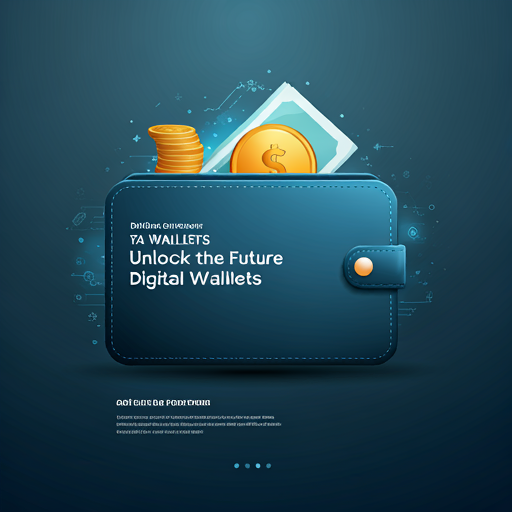The Rise of Digital Wallets: Revolutionizing Payments
Definition and Functionality
Digital wallets are electronic applications that facilitate the storage and management of payment information. They enable users to conduct transactions seamlessly, often through mobile devices. This technology enhances the efficiency of financial exchanges. It simplifies the payment process significantly. Users can store multiple payment methods, including credit cards and cryptocurrencies, in one secure location. This convenience is invaluable in today’s fast-paced world.
Moreover, digital wallets employ advanced encryption techniques to safeguard sensitive data. Security is a paramount concern for users. They also support various transaction types, from online purchases to peer-to-peer transfers. This versatility makes them increasingly popular. As digital wallets evolve, they are likely to integrate with emerging technologies. The future of payments is undoubtedly digital.
Historical Context and Evolution
The concept of digital wallets has evolved significantly since the late 20th century. Initially, electronic payment systems were rudimentary, primarily facilitating online transactions. Over time, advancements in technology led to the development of more sophisticated platforms. This evolution can be categorized into several phases:
Each phase marked a significant leap in functionality and user adoption. The rise of smartphones further accelerated this trend. Users began to demand more convenient payment solutions. This shift reflects a broader change in consumer behavior. Digital wallets now encompass a wide range of services, including loyalty programs and budgeting tools. The landscape of financial transactions is rapidly transforming.
Types of Digital Wallets
Hot Wallets vs. Cold Wallets
Hot wallets are digital wallets connected to the internet, allowing for quick and easy access to funds. They are ideal for frequent transactions and everyday use. However, this connectivity also exposes them to potential security risks. Users must remain vigilant. Cold wallets, in contrast, are offline storage solutions that provide enhanced security for digital assets. They are less susceptible to hacking attempts. This makes them suitable for long-term storage.
Both types serve distinct purposes in the cryptocurrency ecosystem. Hot wallets facilitate immediate access, while cold wallets prioritize security. Users often employ a combination of both to balance convenience and safety. This strategy reflects a prudent approach to asset management. Understanding these differences is crucial for effective financial planning. Security should always be a priority.
Mobile Wallets and Desktop Wallets
Mobile wallets are applications designed for smartphones, enabling users to make transactions on the go. They offer convenience and accessibility, allowing for quick payments and transfers. This immediacy is particularly beneficial in today’s fast-paced environment. In contrast, desktop wallets are software programs installed on personal computers. They typically provide a more comprehensive interface for managing digital assets. Users often appreciate the larger screen and enhanced functionality.
Both wallet types have unique advantages. Mobile wallets excel in portability, while desktop wallets often offer advanced security features. Users may choose based on their specific needs and usage patterns. For instance, frequent travelers may prefer mobile wallets for their ease of use. Meanwhile, those focused on security might opt for desktop solutions. Understanding these distinctions is essential for effective financial management. Security and convenience should always be prioritized.
Benefits of Using Digital Wallets
Enhanced Security Features
Here are 10 trending article titles for a financial website based on the in vogue news and analysis: No input data
Convenience and Accessibility
Challenges and Risks
Security Vulnerabilities
Digital wallets, while convenient, face significant security vulnerabilities. These vulnerabilities can arise from various sources, including software flaws and user negligence. For instance, phishing attacks often target wallet users, tricking them into revealing sensitive information. This can lead to unauthorized access to funds. Additionally, the reliance on internet connectivity increases exposure to cyber threats. Hackers can exploit weaknesses in network security to gain access to digital wallets.
Moreover, inadequate encryption methods can compromise data integrity. Users should prioritize wallets that employ robust security protocols. Regular software updates are essential to mitigate risks. Users often overlook this aspect. Understanding these challenges is crucial for effective asset protection.
Regulatory and Compliance Issues
The regulatory landscape for digital wallets is complex and evolving. Compliance with local and international laws is essential for operators. Non-compliance can result in severe penalties. This creates significant challenges for businesses. They must navigate varying regulations across jurisdictions. Understanding these laws is crucial for operational success.
Additionally, regulatory bodies often impose strict Know Your Customer (KYC) requirements. These measures aim to prevent fraud and money laundering. Users may find these processes cumbersome. However, they are necessary for maintaining security. Companies must invest in compliance infrastructure. This can be costly but is vital for legitimacy.
The Future of Digital Wallets in Cryptocurrency
Integration with Traditional Financial Systems
The integration of digital wallets with traditional financial systems is becoming increasingly important. This convergence allows for seamless transactions between cryptocurrencies and fiat currencies. Users benefit from enhanced flexibility and accessibility. Key areas of integration include:
These integrations facilitate real-time transactions and improve user experience. Additionally, they help bridge the gap between digital and traditional finance. As more financial institutions adopt digital wallets, the landscape will continue to evolve. This shift reflects changing consumer preferences. Users now expect convenience and efficiency. Embracing these changes is essential for future growth.
Potential Innovations and Trends
The future of digital wallets in cryptocurrency is poised for significant innovations. Emerging technologies such as blockchain and artificial intelligence will enhance security and efficiency. These advancements can streamline transaction processes. Users will likely experience faster and more secure payments. Additionally, the integration of biometric authentication methods is expected to rixe. This will provide an extra layer of security.
Furthermore, the development of decentralized finance (DeFi) platforms will influence wallet functionalities. Users may gain access to a broader range of financial services. This includes lending, borrowing, and earning interest on digital assets. As these trends unfold, they will reshape the financial landscape. Users should stay informed about these changes. Adaptability will be crucial for leveraging new opportunities.

Leave a Reply